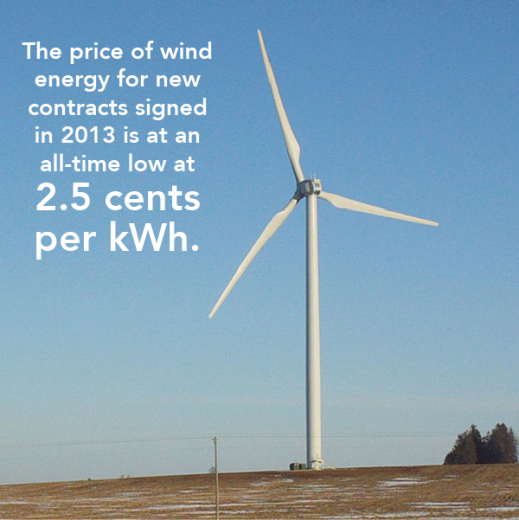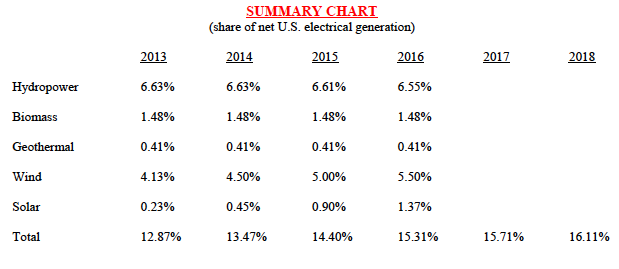Wind hits 2.5 cent/kwh
I will gladly pay you Tuesday
for a hamburger today
-Wimpy
Sha-la-la-la-la-la, live for today
And don't worry 'bout tomorrow, hey, hey, hey
And don't worry 'bout tomorrow, hey, hey, hey
-The Grassroots (1967)
Greetings
Looks like wind is getting cheaper and cheaper. The big question is : Will this cheapness encourage investors to put up the money for more turbines?
Perhaps
One of the commentors to this post, makes an interesting point about investment, and the discount rate. See here Even if wind were cheaper than coal or gas plants in the long run, the timing of investments may affect the analysis. That's because with wind, you need to pay it all up front (except some minor maintenance). With gas, the initial cost is lower, and you get to string out the rest of te costs (fuel), over the life of the facility. That make a difference to investors. With wind, they are either tieing up more capital (and losing out on alternative investments), or they are borrowing more money and paying more interest .
Its the whole problem of the discount rate. Which shows up again in the climate change debates. People can be rational, and take measures now for the future, But, it goes against their nature. People value the present much higher than the future. see here
.
"DANIEL KAHNEMAN is not hopeful. “I am very sorry,” he told me, “but I am deeply pessimistic. I really see no path to success on climate change.”
"Kahneman won the 2002 Nobel prize in economics for his research on the psychological biases that distort rational decision-making. One of these is “loss aversion”, which means that people are far more sensitive to losses than gains. He regards climate change as a perfect trigger: a distant problem that requires sacrifices now to avoid uncertain losses far in the future. This combination is exceptionally hard for us to accept, he told me.
.....
"Discussions about economics, meanwhile, invariably turn into self defeating cost-benefit analyses. Stern offers a choice between spending 1 per cent of annual income now, or risking losing 20 per cent of it in 50 years’ time. What sounds like an easy choice (a ‘no-brainer’ we could say) to him is actually disconcertingly similar to the language used in Daniel Kahneman’s famous experiments into temporal discounting. And, not surprisingly it produces the same result: phrased as a choice, people are innately biased to postponing action and taking a gamble on the future. What is more, politicians and business leaders are especially to prone to what Kahneman would call the ‘optimism bias’ – the tendency to overestimate their own luck and skill- and are all too willing to take this gamble. "
-----
US Wind Hits Record Low Price of 2.5 Cents Per Kilowatt Hour; 9-12 Gigawatts of Renewable Energy Additions Ramp up for 2014
Labels: Climate Change, discount rate, economics, hamburger, Kahneman, Wimpy, wind power



0 Comments:
Post a Comment
Subscribe to Post Comments [Atom]
<< Home